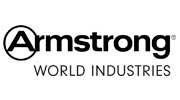Drywall Recycling Market: An Amendment to CompostScrap gypsum drywall is currently added to composting systems in a number of locations. Many of these systems are located at waste processing sites that already have compost operations in progress. While the paper fraction of the drywall can certainly biodegrade as part of the compost, it important to note that the gypsum itself will not biodegrade to any major extent and will instead be incorporated into the final compost product. This results in a calcium- and sulfur-rich compost, which may have a benefit for some crops (as described in the Markets section on land application). Gypsum also offers the potential to bind odors associated with ammonia. On the other hand, if the composting system is not kept aerobic, anaerobic microorganisms can result in the production of hydrogen sulfide, a foul smelling gas (see discussion on odors from landfills on the home page). The application of gypsum drywall to mechanically agitated compost systems (e.g. a windrow turner) tends to work better than static systems (e.g. a forced air static pile) because the mixing and breakup of the gypsum that occurs. |
























